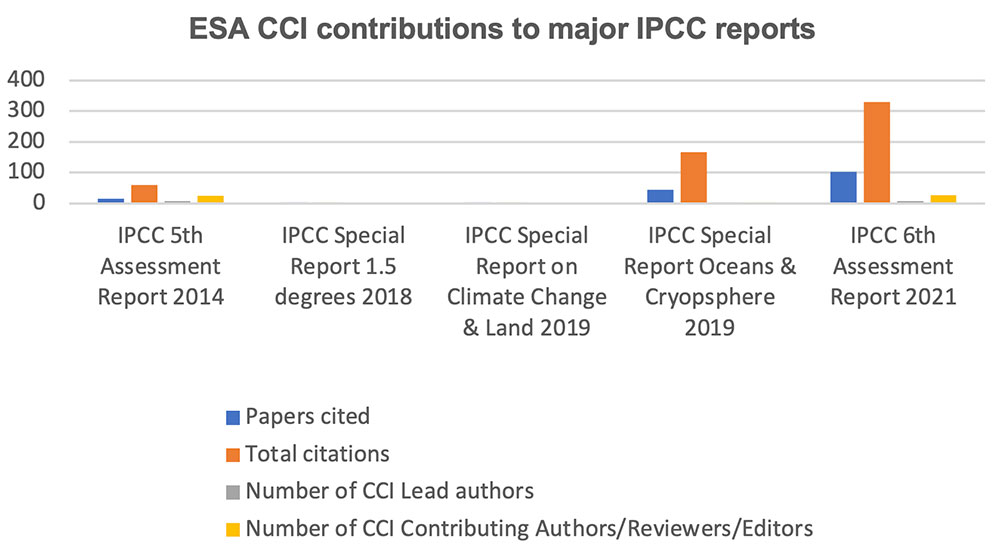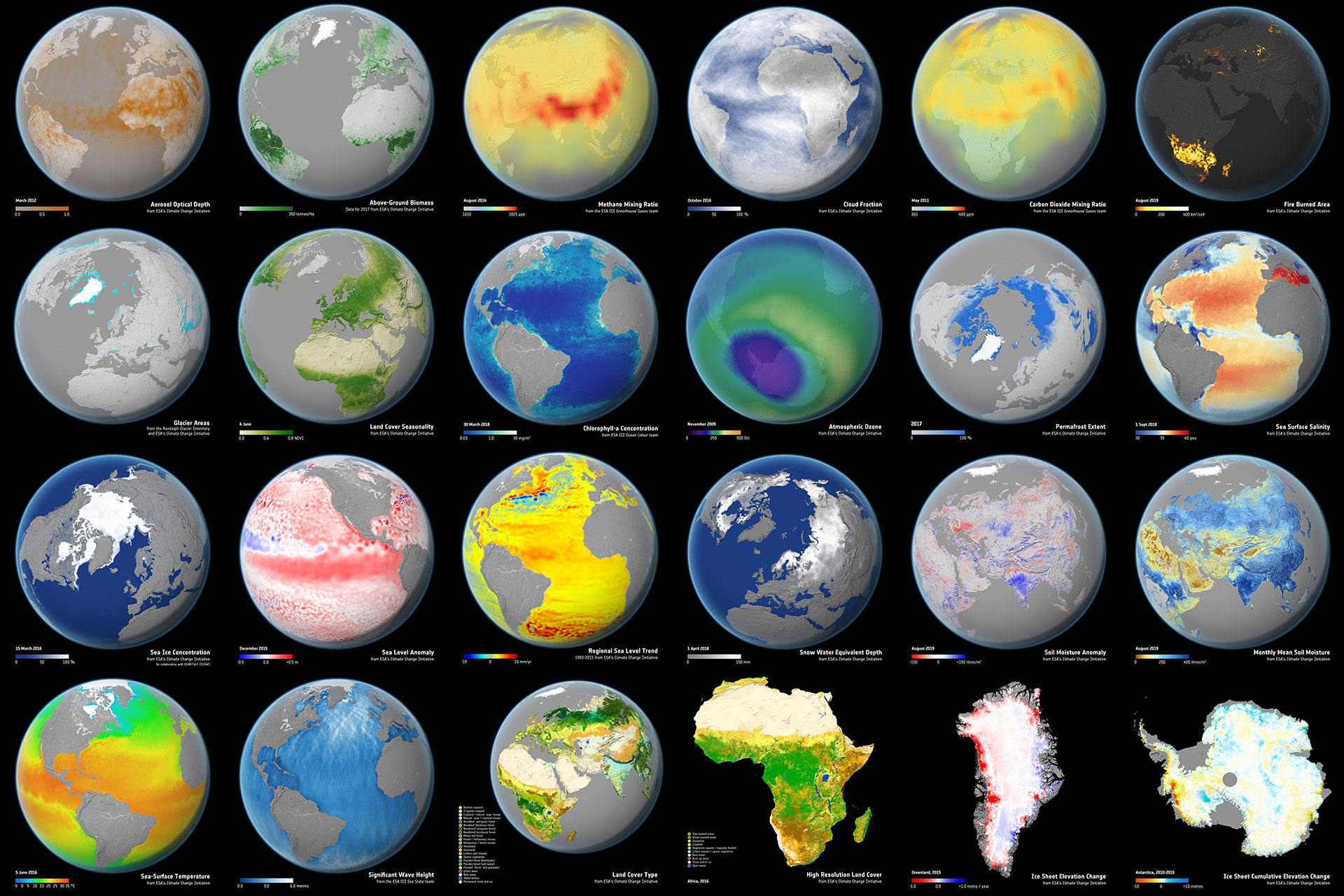One-to-One with ESA
What do you like to put forth when presenting the ESA Climate Office? What is its role?Susanne Mecklenburg : The European Space Agency (ESA) leads on observing the Earth’s changing climate from space across all programmes in its Earth Observation Programme. This includes developing and implementing satellite missions providing climate relevant observations as the basis for long term climate data sets, R&D to better understand our Earth system, and applications focussing on adaptation and resilience.
The ESA Climate Office is part of the ESA’s Earth Observation Science, Applications and Climate Department and the Agency’s focal point for climate-related activities, based at ECSAT (European Centre for Space Applications and Telecommunications), Harwell in Oxfordshire (United Kingdom). Its flagship programme, the Climate Change Initiative (CCI), draws together over 40 years of data from ESA’s own satellite missions and those from other space agencies. The CCI science teams focus on R&D activities to generate long-term, global climate data records that describe the evolution of key components of the Earth’s climate system. The Climate Data Records (CDR) developed at ESA, in collaboration with the wider scientific community, directly addresses challenges of climate adaptation and mitigation. The R&D contribution that ESA provides, further supports the development of CDRs and systems for operational climate services to directly support climate change – related decision making.
Currently more than 20 Essential Climate Variables (ECVs) have been addressed by science teams involved in the CCI. Drawing on multiple ECVs, the CCI includes budget closure projects that address complex science questions [Editor’s note: the closure of the sea-level budget requires that the observed changes in the sea level equal the evolutions of independent components (e.g. glaciers), more readily assessed using ECVs]. All ECV datasets are fully validated and have high levels of traceability and consistency, including quantitative estimates of uncertainty required by both climate science and modelling communities. In its contribution to climate and Earth system science, this programme has published over 600 peer-reviewed articles, and has greatly supported the Intergovernmental Panel on Climate Change's (IPCC) headline statements on climate in its recent sixth Assessment Report.

Susanne Mecklenburg © ESA
What can the ESA climate activities bring to the table for SCO?S.M.: ESA’s climate activities underpin many climate-related initiatives through the provision of observations of our planet and its climate from space. In addition, the R&D activities carried through ESA greatly enhance our understanding of the Earth’s climate and its changes over time. Climate data records (CDR) provided through the CCI programme underpin many climate-related activities that are relevant for the aim of SCO to look at and support in particular regional, national and local activities. Furthermore, these CDRs are precursors for their operational counterpart in the portfolio of e.g. the Copernicus Climate Change Service (C3S), since CCI focusses on R&D and pre-operational development.
In the same way that CNES supports SCO France projects in the use of space data, ESA supports projects in collaboration with Future Earth that have been certified for SCO recently. Can you please elaborate on these projects, what is their focus, what data do they use and what is novel about them? S.M.: In 2020-2021 ESA supported four projects to develop visualisation tools that demonstrate the value of ESA’s EO and climate data for climate adaptation, in collaboration with the Future Earth Global research networks. The aim was to help researchers to go that extra mile in their engagement with stakeholders who could benefit from their research findings.
Among these projects, City Explorer is an interactive planning tool to aid urban planning, mapping the ecosystem services provided by blue and green spaces. Monitoring the Australian Gold Coast aims to develop an automated SAR-based methodology for assessing post-storm beach recovery. Podcast-Demo wants to highlight how climate observations can be applied to cholera risk in coastal regions of the northern India ocean, to develop an outbreak risk model. Finally, Enhancing adaptation and resilience along West Africa’s Coasts, EARWAC, proposes a dashboard combining EO data and local indicators for coastal flood vulnerability, flash floods - historical and projected - and at-risk population. The three former projects listed have been SCO-accredited; the fourth is in the process of applying for its SCO accreditation.
Unique to have this strong user focus for co-designing the demo tools, all these projects have been showcased at COP26 in Glasgow (November 2021). They have been the subject of videos in ESA’s public zone exhibit, in specially-hosted pavilion events for policymakers, and as an invited presentation at the IPCC SBSTA ‘Earth Information Day’.
« ESA’s and SCO’s activities are fully complementary. »
How do you see the collaboration between ESA and SCO? S.M.: ESA’s and SCO’s activities are fully complementary, with SCO concentrating on international collaboration with space and non-space organisations to engage local and regional policy and decision makers to use space data to address the impact of a changing climate, whereas ESA is concentrating on global policy drivers.
ESA actively participates in the work of SCO and its governing bodies, e.g. through the Steering Committee Meetings. ESA also supported the SCO projects “labelling process” and joined SCO to host a community webinar in 2021 to share progress in the development of tools that use Earth observations towards climate-smart decision making. A major milestone is coming up in 2022 with the signature of the SCO International Charter, to which ESA contributed significantly.
How do you see the future of SCO?S.M.: SCO is an exciting initiative focusing precisely on the main challenge that we will face over the coming decade – supporting the translation of global climate policy into regional and local information. The large variety of projects being part of the SCO family and in particular the initiative to enable collaboration, communication and outreach on a national level are really laudable. These activities empower national organisations to take action.
You mentioned the IPCC earlier. How did ESA and the Climate Office contribute to its recently published 6th Assessment Report?S.M.: IPCC released its Assessment Report for Working Group I on the physical evidence base in August 2021, which is the strongest and most significant IPCC report to date. It addresses the physical understanding of the climate system and climate change and draws from 14,000 scientific publications. The team comprises 234 authors from more than 60 countries. The report provides an improved understanding of human influence on climate characteristics and a greater focus on regional climate change, changes in extreme events and their link to human activity. It also provides an interactive online global and regional atlas for observed and projected climate change information
CCI contributed significantly to the report with a noticeable number of authors from the CCI community and an increased uptake of CCI led publications being referenced. In detail: 8 lead/coordinating authors, 16 contributing authors, ~10 expert reviewers, ~100 papers cited and +330 in-text citations.

----------
The ESA Climate Office is the focal point for the Agency’s climate-related activities and aims to increase the availability and use of global, satellite-based Earth observation data for decision-making. Bringing together academia and industry, it is the point of contact for organisations searching for global climate information, data, and new opportunities. Observer for the IPCC and active member of major international climate working groups, the ESA Climate Office has an important role in raising public understanding of the climate crisis and what Earth observation data reveals about it.



